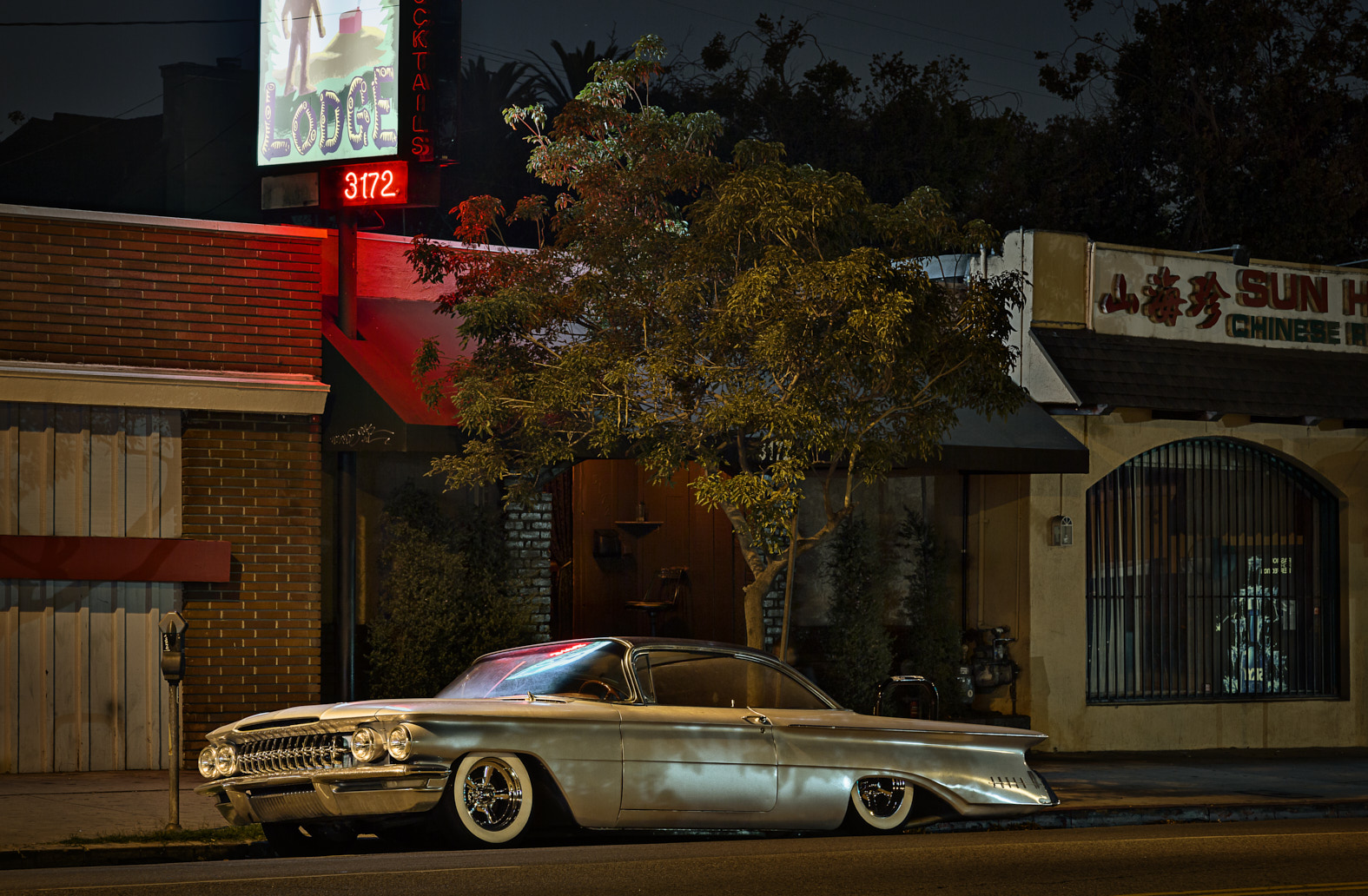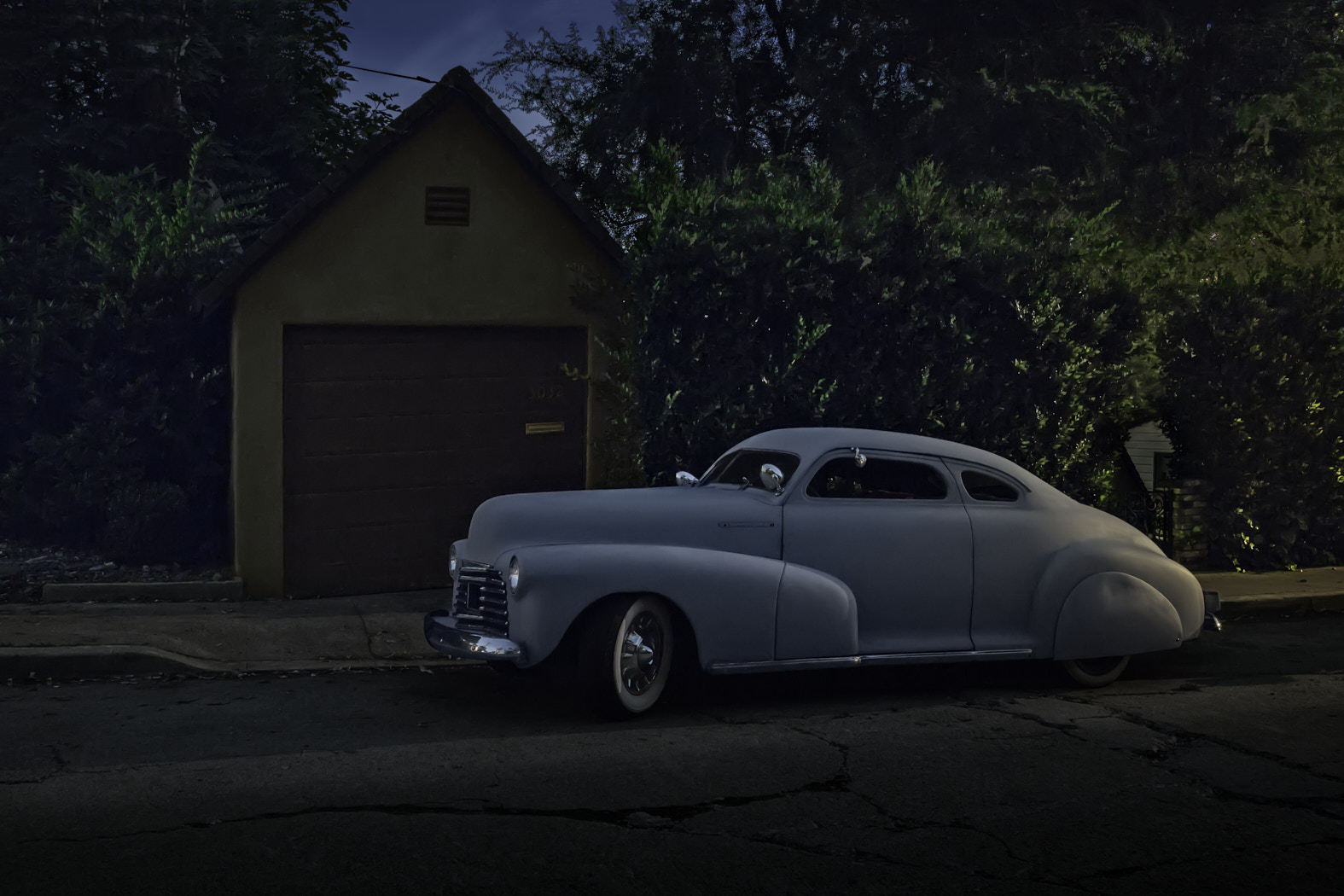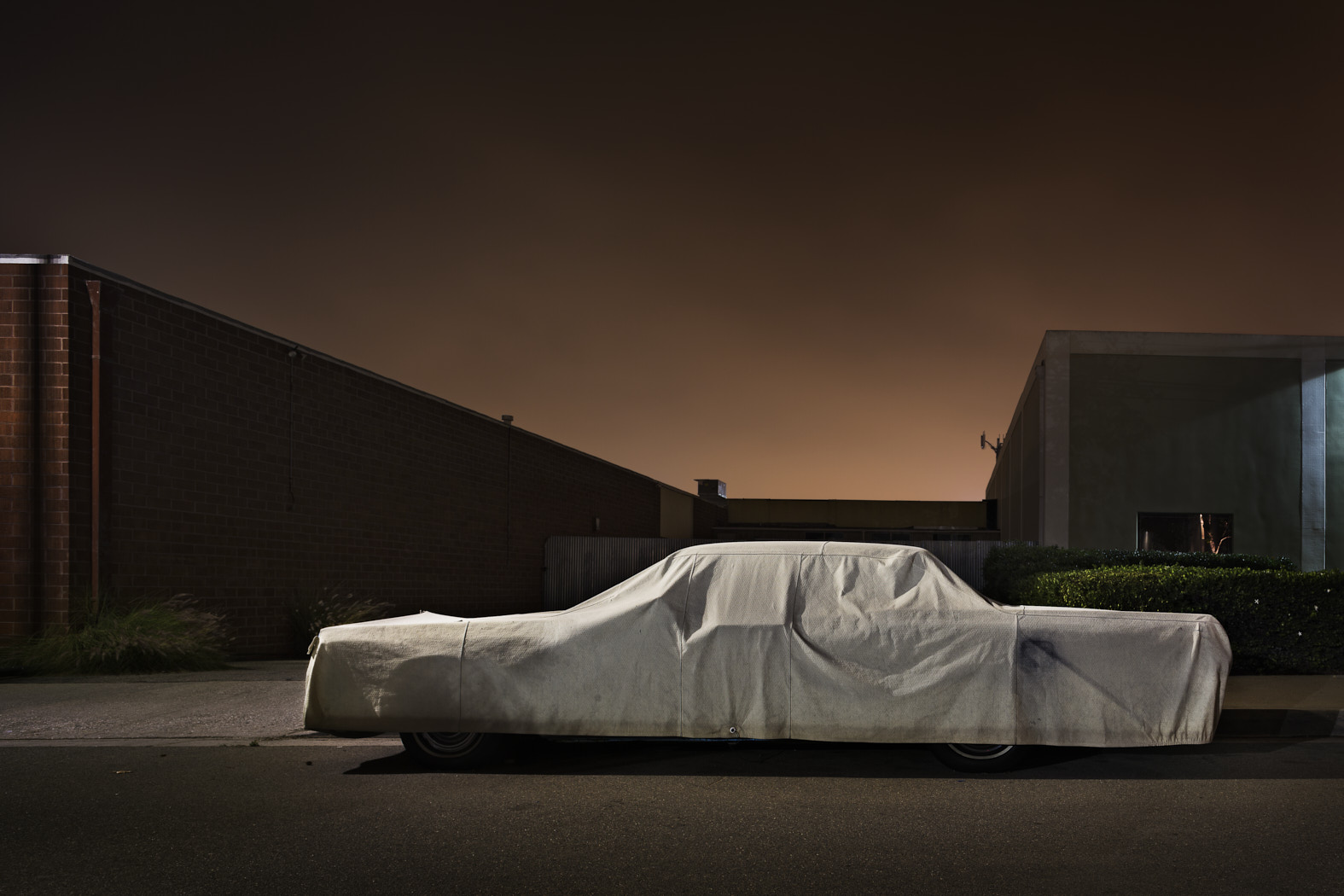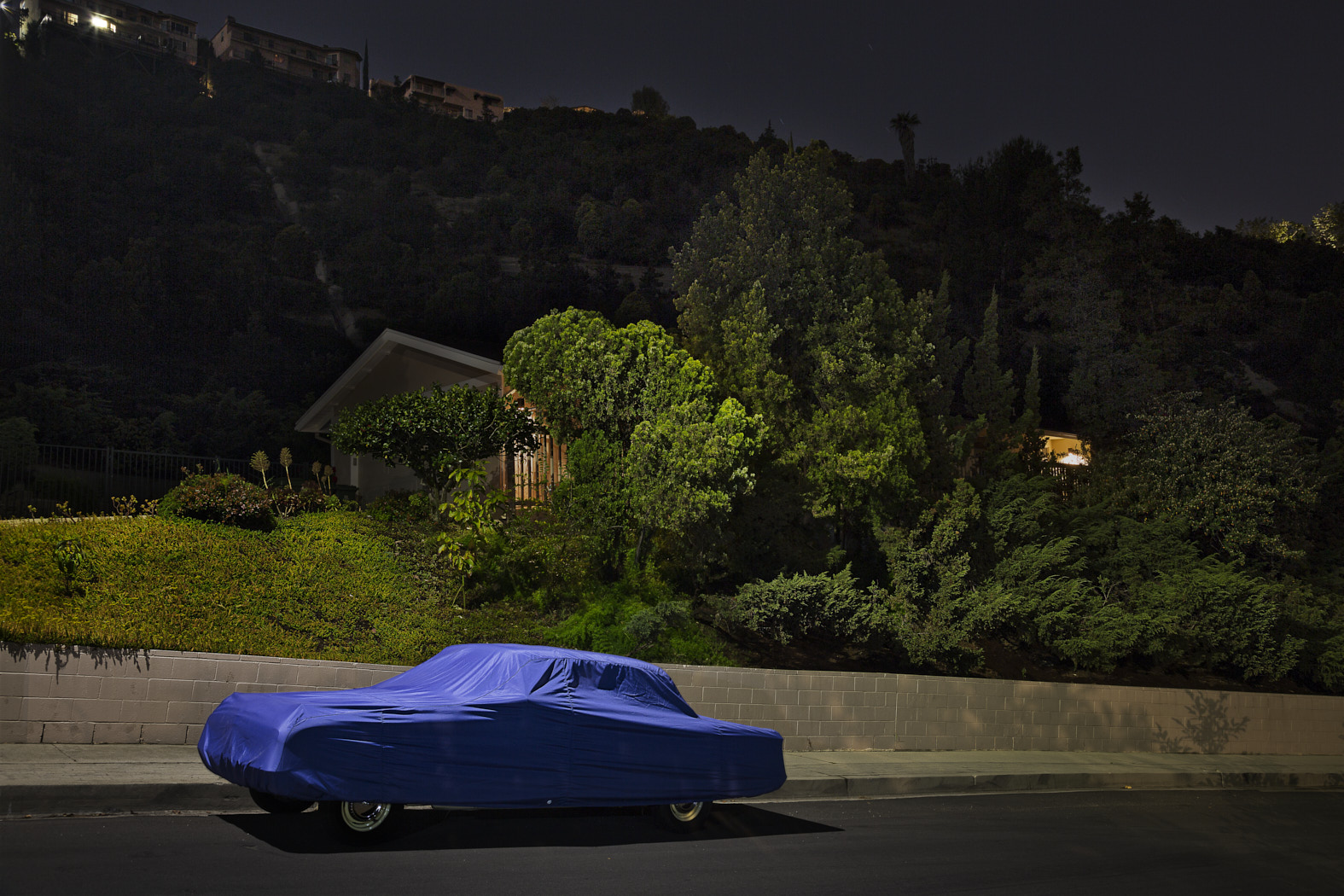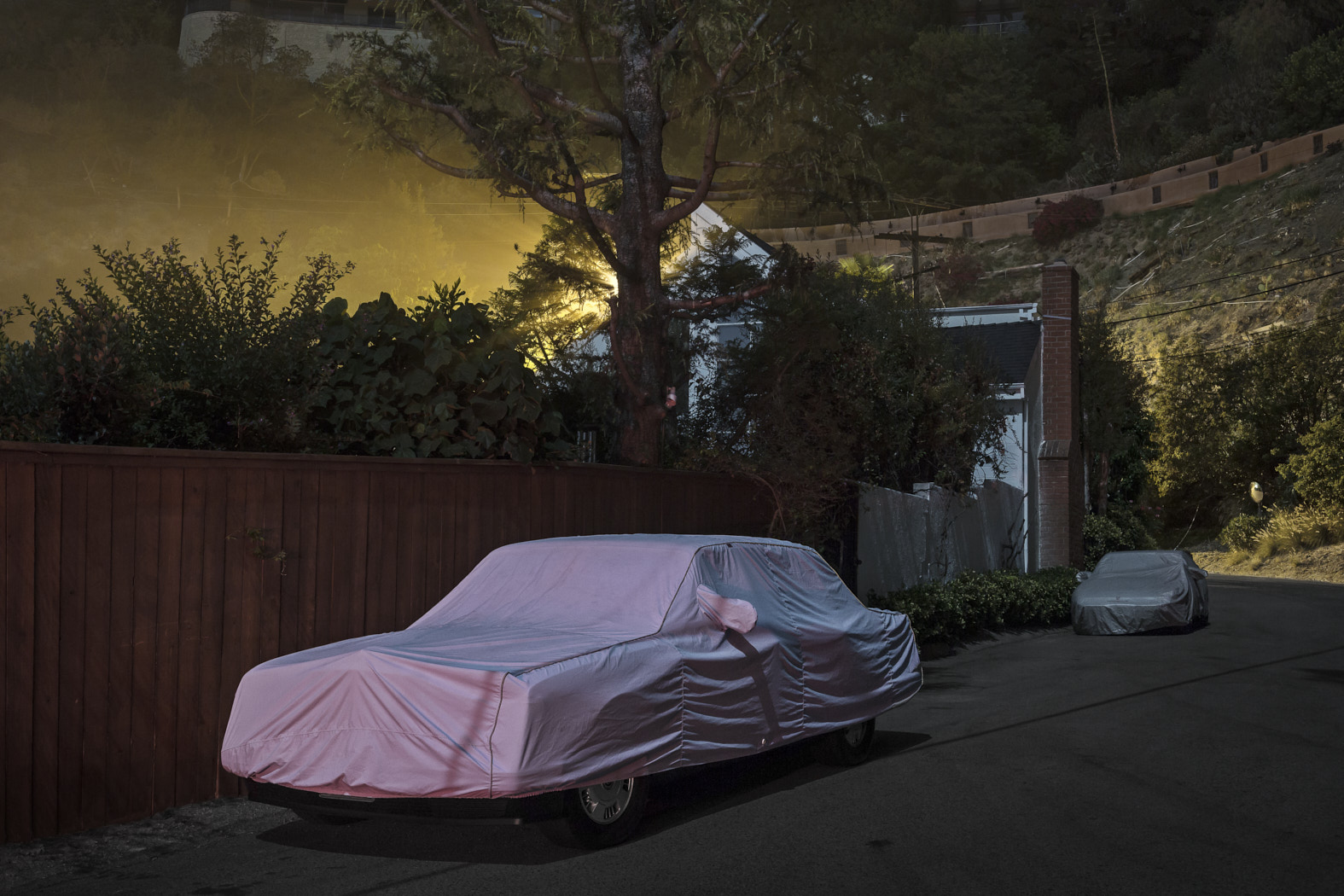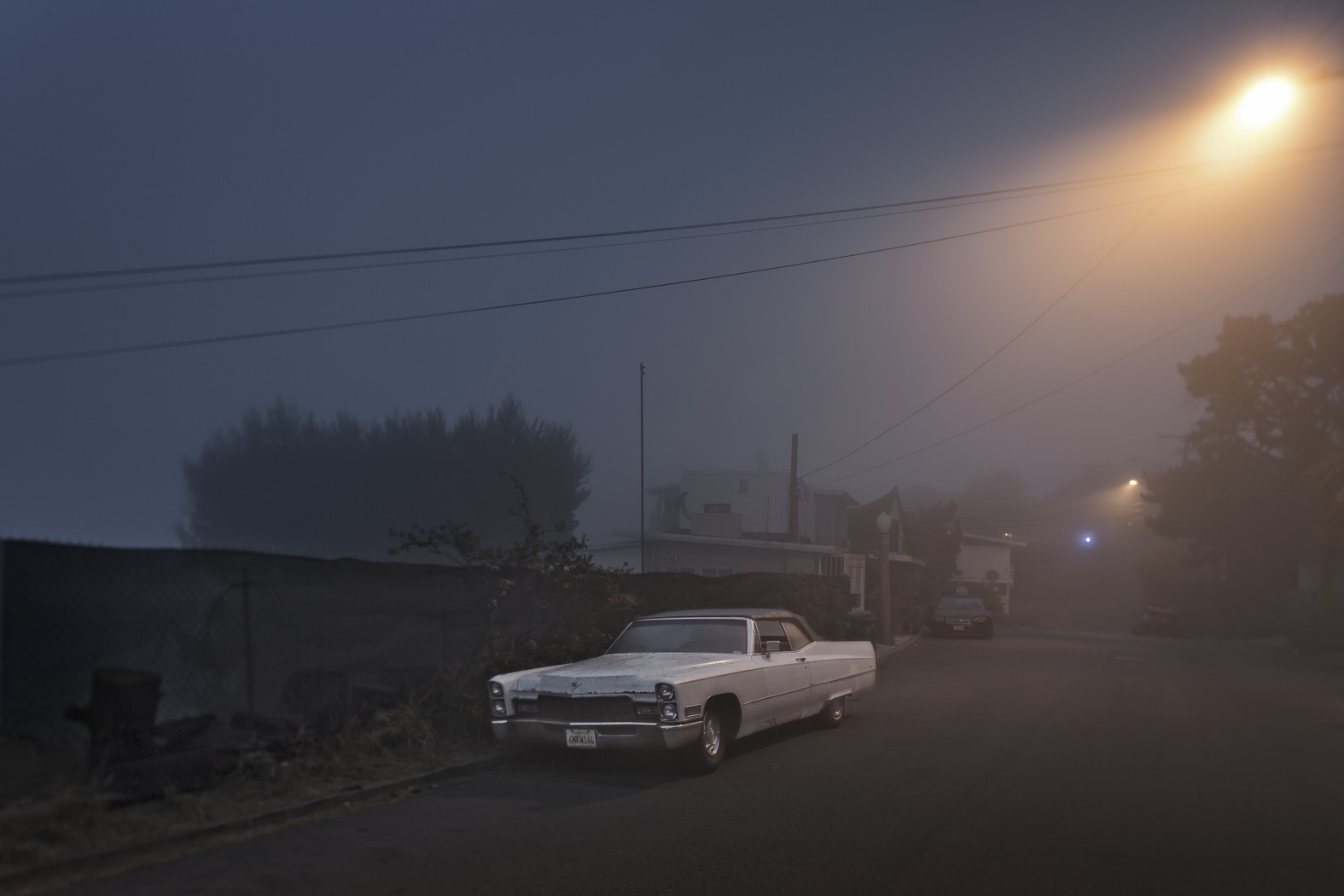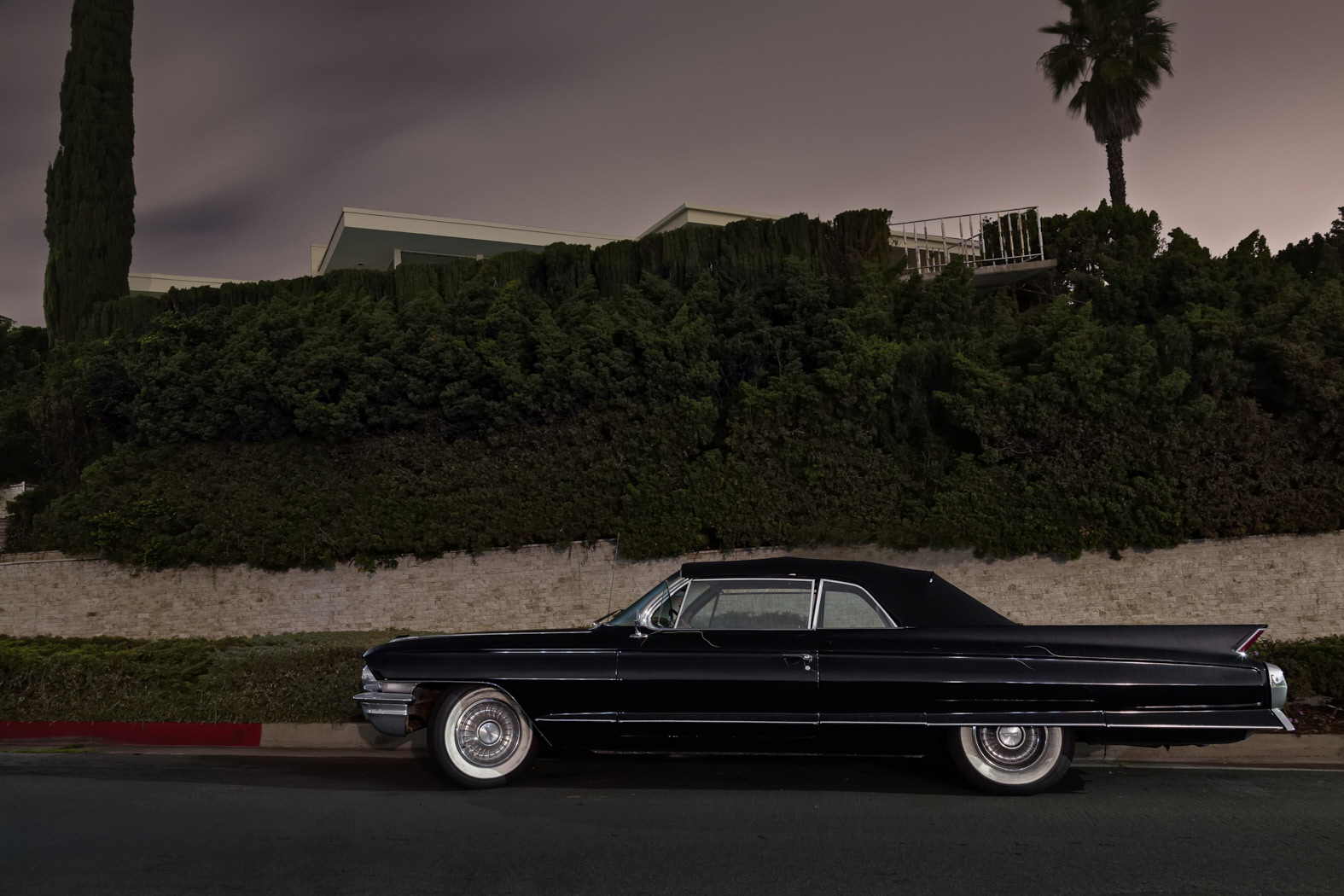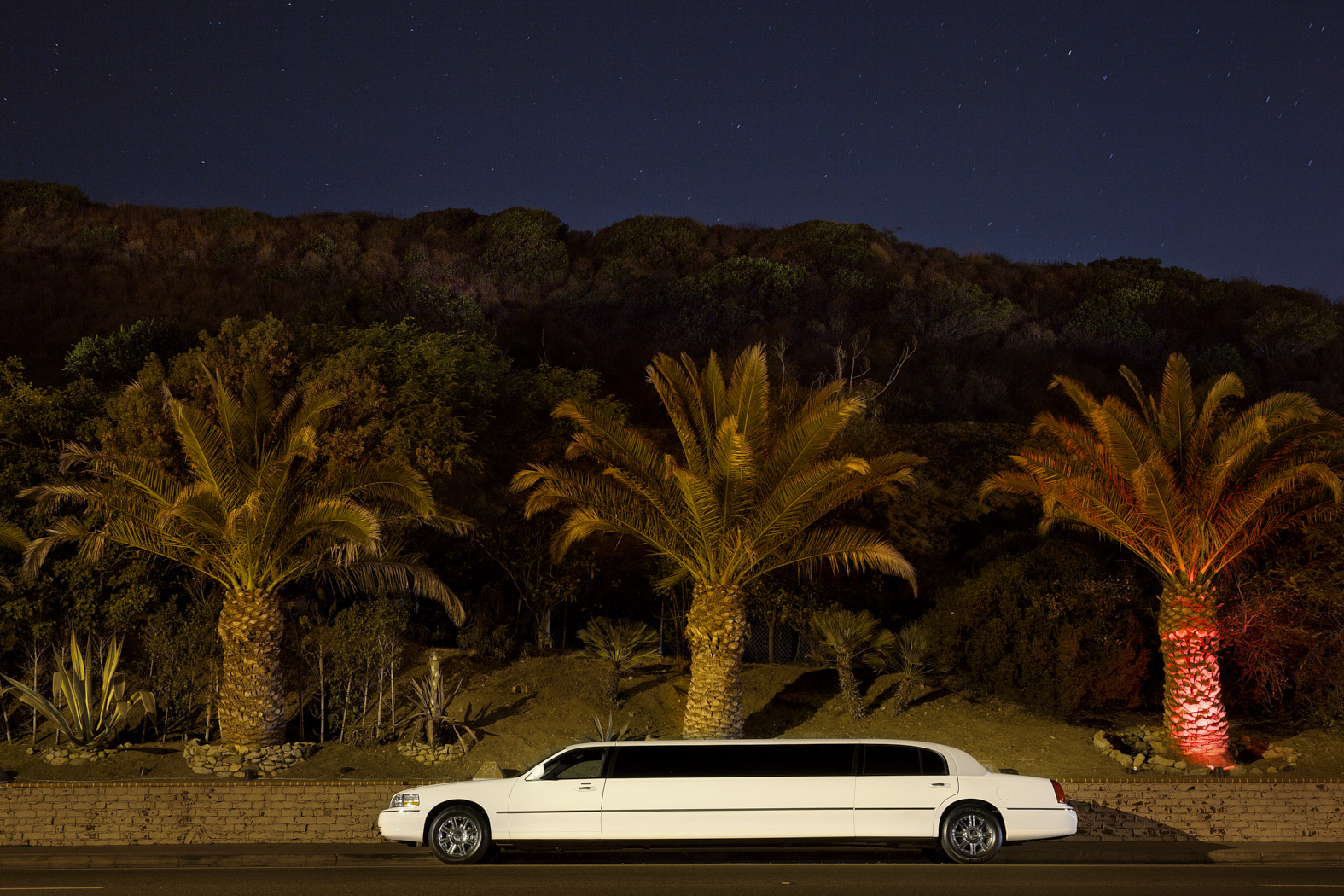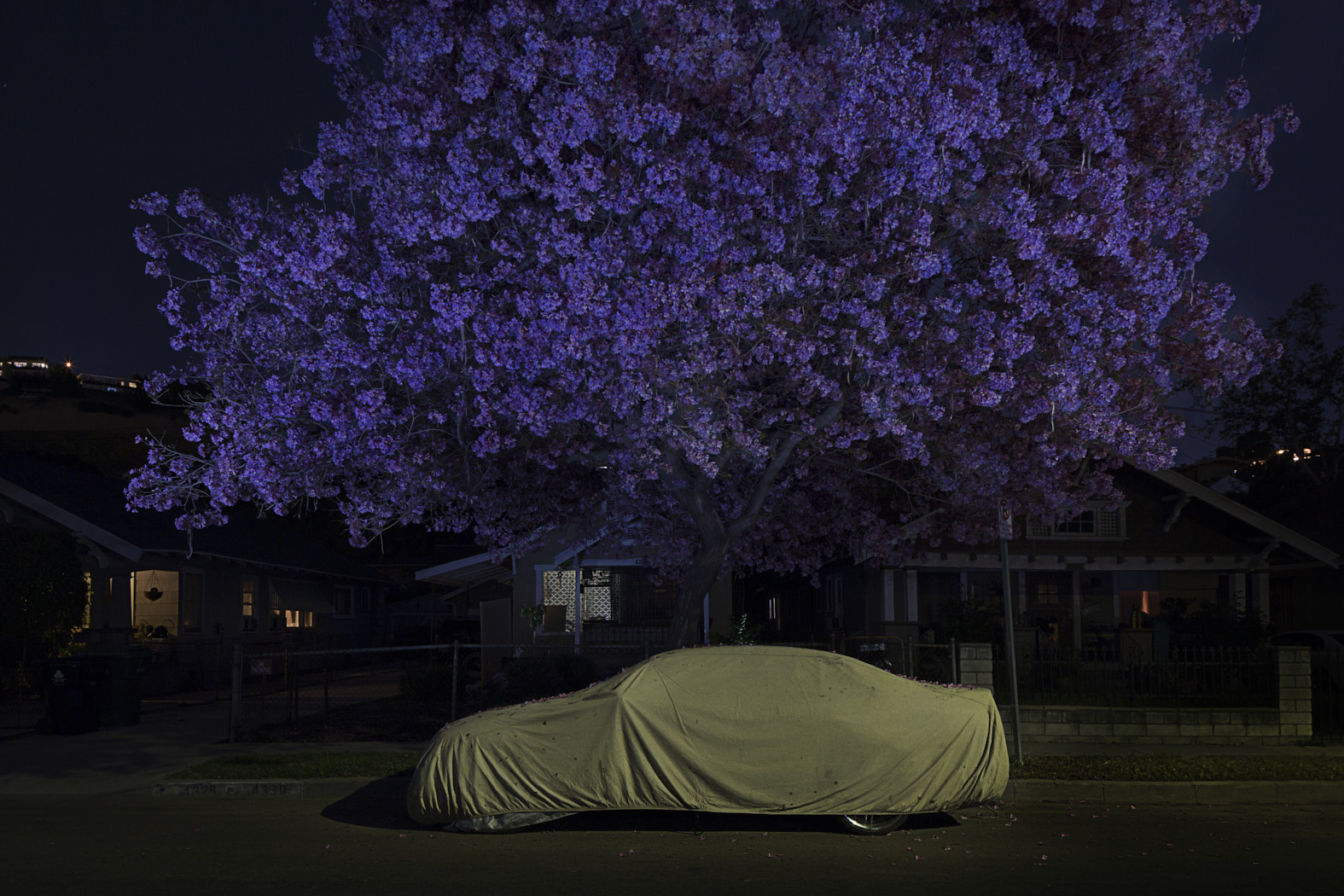Gerd Ludwig
SLEEPING CARS
In Los Angeles County there are more than seven million registered vehicles. They work all day to create two of LA’s most infamous commodities: traffic jams and smog. But where do all those cars go to rest?
SLEEPING CARS is an exhibition of work by contemporary documentary photographer Gerd Ludwig, it features large scale photographs of resting cars at night throughout Los Angeles. Undeniably the city of cars; these vehicles are the blood in the veins of the city.
Gerd Ludwig explains:
By nature, I am a night owl. In what Kafka called his most productive hours, when dream and reality meet, I go out to photograph sleeping cars. I search ceaselessly for cars that speak to me. My cars are loners. Like a devoted bird watcher, I have learned to recognize their sleeping patterns. With voyeuristic pleasure I’ve spied on them in their nightgowns. I’ve watched some sleep in the nude; some take afternoon naps, and a few lucky ones get to sleep together. I find covered cars more in L.A. than anywhere else. Here, middle-class families generally own more than one car, but their homes only have one-car garages. So many cars are left parked on the street for an extended period – lovingly covered, especially during holidays, when their owners treat them like crated pets.
I like to photograph during foggy nights or a full moon. A few times the police have stopped me in my work, wondering what I was doing out in the streets in the middle of the night. Was I a Peeping Tom or even worse, a paparazzo? After being shown a few of the car photographs on my iPad, they’ve even colluded with me and tipped me off about interesting cars to check out in the neighborhood. The cars in this project are photographed as I find them. Occasionally, proud car owners will ask me if I want them to move or uncover the vehicle for the photograph, but I generally don’t like them to disturb the cars in their slumber.
Gerd Ludwig was born in Alsfeld, Germany in 1947. After interrupting his German literature studies, he traveled in Scandinavia and North America while supporting himself with jobs as a bricklayer, sailor, gardener and dishwasher. Upon his return to Germany, he studied photography with Professor Otto Steinert at the Folkwangschule in Essen, graduating in 1972. He co-founded VISUM, Germany’s first photographer-owned photo agency in 1973, and began working for Geo, Stern, Spiegel, Zeit-Magazin, Time and Life, making his name by photographing renowned artists, such as Joseph Beuys and Friedensreich Hundertwasser.
In 1984, Ludwig relocated to New York. In the early 1990s, he signed on as a contract photographer for National Geographic Magazine, focusing on environmental issues and the social changes in the former Soviet Union. Broken Empire: After the Fall of the USSR, a ten-year retrospective was published in 2001.
Gerd Ludwig’s engaged reporting on the aftermath of the nuclear catastrophe in Chernobyl is considered a milestone in modern photojournalism. The Long Shadow of Chernobyl, published by Edition Lammerhuber, features an essay by Mikhail Gorbachev, combining images from his 20-year-long coverage of the aftermath of the world’s worst nuclear disaster to date.
His works have been exhibited in museums, galleries and festivals such as the Perpignan Visa pour L’Image and the Natural History Museum in Vienna, Austria. He was awarded with the Lucie Award for International Photographer of the Year in 2006, the German Society for Photography (DGPh)’s prestigious Dr. Erich-Salomon Award in 2014, and the 2015 Missouri Honor Medal for Distinguished Service in Journalism. In 2016, Minus 2/3 was published in English, German and Italian by Rocky Nook and dpunkt Verlag. Sleeping Cars was published in the same year by Edition Lammerhuber. Gerd Ludwig lives and works in Los Angeles.




